Explore the potential mechanism of Huachansu injection against osteosarcoma via metabolomics, network pharmacology and bioinformatics
- PMID: 40764575
- PMCID: PMC12323198
- DOI: 10.1186/s13020-025-01179-x
Explore the potential mechanism of Huachansu injection against osteosarcoma via metabolomics, network pharmacology and bioinformatics
Abstract
Aim: Huachansu injection (HCSI) shows effective medicinal functions against osteosarcoma. This study aimed to reveal the underlying mechanisms of HCSI against osteosarcoma by integrating metabolomics, network pharmacology and bioinformatics.
Methods: Metabolomics was used to identify different metabolites and pathways. Network pharmacology was utilized to predict the potential targets of HCSI against osteosarcoma. Differentially expressed lncRNAs and miRNAs were screened and the corresponding lncRNAs-miRNAs-mRNAs network were constructed through the GEO database and miRcode database. Machine learning and immune infiltration analysis were performed on the key target obtained from the intersection of network pharmacology and bioinformatics. The binding affinity between active compounds of HCSI and potential targets was evaluated by molecular docking. The underlying mechanisms were further validated by RT-qPCR and immunoblotting.
Results: Lipid metabolism pathways were obtained by non-target metabolomics enrichment. A total of 44 HCSI targets associated with osteosarcoma were collected by network pharmacology. Intersection of the mRNAs obtained from ceRNA network with the above 44 targets yielded eight common targets. The main target HMGCR were obtained by machine learning and RT-qPCR. The BCYRN1-miR-27a-3p-HMGCR axis was subsequently screened as the primary ceRNA regulatory network in HSCI against osteosarcoma. Molecular docking also showed an excellent affinity between the active compounds of HCSI and HMGCR. In vitro experiments demonstrated that HCSI down-regulated HMGCR, thereby reduced intracellular cholesterol levels, and ultimately promoting osteosarcoma cell apoptosis.
Conclusion: HCSI could inhibit osteosarcoma progression by regulating lipid metabolism through BCYRN1-miR-27a-3p-HMGCR axis, indicating that HCSI may provide insights for developing herbal medicine injection-based therapies for osteosarcoma.
Keywords: BCYRN1-miR-27a-3p-HMGCR axis; Huachansu injection; Lipid metabolism; Metabolomics; Network pharmacology; Osteosarcoma.
© 2025. The Author(s).
Conflict of interest statement
Declarations. Ethics approval and consent to participate: Not applicable. Consent for publication: The manuscript is approved by all authors for publication. Competing interests: The authors have declared no Competing interests.
Figures
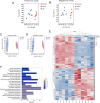

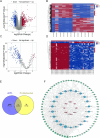
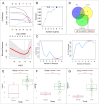
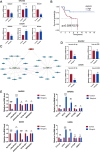
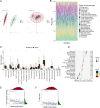
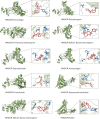
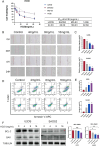
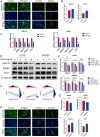
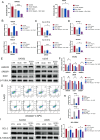
Similar articles
-
Understanding mechanisms of Polygonatum sibiricum-derived exosome-like nanoparticles against breast cancer through an integrated metabolomics and network pharmacology analysis.Front Chem. 2025 Jun 6;13:1559758. doi: 10.3389/fchem.2025.1559758. eCollection 2025. Front Chem. 2025. PMID: 40547857 Free PMC article.
-
Deciphering Shared Gene Signatures and Immune Infiltration Characteristics Between Gestational Diabetes Mellitus and Preeclampsia by Integrated Bioinformatics Analysis and Machine Learning.Reprod Sci. 2025 Jun;32(6):1886-1904. doi: 10.1007/s43032-025-01847-1. Epub 2025 May 15. Reprod Sci. 2025. PMID: 40374866
-
Integrated bioinformatics and network pharmacology to identify and validate macrophage polarization related hub genes in the treatment of osteoarthritis with Astragalus membranaceus.J Orthop Surg Res. 2025 May 30;20(1):543. doi: 10.1186/s13018-025-05799-9. J Orthop Surg Res. 2025. PMID: 40442788 Free PMC article.
-
Medicine for chronic atrophic gastritis: a systematic review, meta- and network pharmacology analysis.Ann Med. 2023;55(2):2299352. doi: 10.1080/07853890.2023.2299352. Epub 2024 Jan 3. Ann Med. 2023. PMID: 38170849 Free PMC article.
-
Study on the mechanism of Shujin Tongluo granules in treating cervical spondylosis based on network pharmacology and molecular docking.Medicine (Baltimore). 2023 Jul 21;102(29):e34030. doi: 10.1097/MD.0000000000034030. Medicine (Baltimore). 2023. PMID: 37478234 Free PMC article.
References
-
- Cheng D, Zhang Z, Mi Z, et al. Deciphering the heterogeneity and immunosuppressive function of regulatory T cells in osteosarcoma using single-cell RNA transcriptome. Comput Biol Med. 2023;165: 107417. 10.1016/j.compbiomed.2023.107417. - PubMed
-
- Lu KH, Lu EWH, Lin CW, Yang JS, Yang SF. New insights into molecular and cellular mechanisms of zoledronate in human osteosarcoma. Pharmacol Ther. 2020;214: 107611. 10.1016/j.pharmthera.2020.107611. - PubMed
Grants and funding
LinkOut - more resources
Full Text Sources

